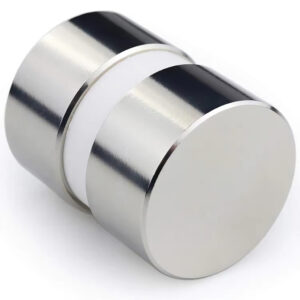Are you looking for ways to improve the performance of your braking system? Look no further! Magnetic brakes offer an innovative solution with numerous benefits for technicians and engineers. In this guide, we’ll explore how to maximize performance with magnetic brakes, providing you with valuable insights and tips for your next project. Whether you’re a mechanical engineer designing new systems or a technician maintaining existing ones, our comprehensive guide will help you optimize the efficiency, safety, and lifespan of magnetic brakes.
In-Depth Exploration
Get ready to learn more about:
- What are magnetic brakes and how do they work?
- Are magnetic brakes better than mechanical brakes?
- Are magnetic brakes cost-effective?
- How to choose the right magnetic brake for your application?
- What are the maintenance considerations for magnetic brakes?
- How to test magnetic brake performance?
- What is the typical lifespan of magnetic brakes?
- Are there any safety concerns with magnetic brakes?
- What are common problems to look out for when using magnetic brakes?
- How do magnetic brakes compare to hydraulic and pneumatic brakes?
- Future advancements in magnetic brake technology?
Detailed Explanations
What are magnetic brakes and how do they work?
Magnetic brakes function by converting electrical energy into heat energy, thereby providing a controlled braking force. They consist of a coil of insulated wire and a ferromagnetic core. When an electric current flows through the coil, it creates a magnetic field that interacts with the ferromagnetic core. The resulting magnetic flux duality in the braking system produces friction, which generates heat. This heat is dissipated through the core and surrounding materials, thus applying force to the rotating component that is being braked. Magnetic brakes are known for their fast response time, low maintenance, and ability to handle high torque loads.
Are magnetic brakes better than mechanical brakes?
The choice between magnetic and mechanical brakes depends on your specific requirements. Magnetic brakes are ideal for applications that need high power and torque, fast response times, non-contact braking, and require precise control over the braking force. On the other hand, mechanical brakes are excellent for applications that require wear compensation and when working with smaller loads. Both types have their unique benefits and drawbacks.
Are magnetic brakes cost-effective?
Magnetic brakes can offer both cost savings and long-term benefits. They can reduce maintenance costs due to their minimal wear components, require less frequent servicing, and can operate continuously without overheating. In the long run, these factors can make magnetic brakes a more cost-effective solution compared to traditional mechanical brakes.
How to choose the right magnetic brake for your application?
Choosing the right magnetic brake involves considering several factors, including:
- Type of application: Determine if you require high torque, rapid response, non-contact braking, or variable braking force.
- Axle diameter and type: Ensure the magnetic brake is designed for the specific size and material of your shaft.
- Ambient operating temperature: Some brakes may not perform well in high-temperature environments.
- Load capacity: Compare the brake’s torque ratings to ensure it can handle the forces being applied.
- Ports: Connect the brake to the appropriate control system with adequate flow and pressure ratings.
What are the maintenance considerations for magnetic brakes?
Magnetic brakes do not have moving parts, which means they require less maintenance compared to other types of brakes. Regular inspection, cleaning, and replacing debris-damaging magnetic components can always help prolong their lifespan. It’s also crucial to monitor electrical connections, as loose or corroded wires can affect performance and lead to premature failure.
How to test magnetic brake performance?
To test the performance of a magnetic brake, you can follow these steps:
- Ensure the brake is commissioned correctly with the correct voltage and amperage settings.
- Apply a controlled torque to the brake while measuring its ability to decelerate a test object.
- Adjust brake settings based on your test results until the desired deceleration rate is achieved.
- Verify that the trimming screw stabilizes the approach rate under no-load conditions.
- Regularly check the brake’s friction surface for wear and replace if needed.
What is the typical lifespan of magnetic brakes?
The lifespan of a magnetic brake depends on the usage and care it receives. While they are generally designed to last longer than mechanical brakes, proper maintenance, and operating conditions are crucial. Regular servicing and monitoring can help ensure the brake’s longevity.
Are there any safety concerns with magnetic brakes?
Magnetic brakes are generally safe, but it’s essential to adhere to proper installation, maintenance, and handling procedures. The primary safety considerations include:
- Electrical shocks: Ensure proper grounding and handling of electrical components.
- Wear and tear: Regular inspection for wear and timely replacement can prevent potential issues.
- High temperatures: Monitor the working area to avoid the risk of burns or the spread of heat to nearby components.
What are common problems to look out for when using magnetic brakes?
Common concerns related to magnetic brakes include:
- Overheating: Causes wear and potential equipment damage.
- Dose not maintain brake settings over time: Call for timely adjustment and testing.
- Faulty electrical connections: Can lead to performance issues or system failure.
How do magnetic brakes compare to hydraulic and pneumatic brakes?
Magnetic brakes offer several advantages over hydraulic and pneumatic brakes:
- Faster response times: Until hydraulic pressure or air pressure is fully built, magnetic brakes can act quickly.
- Minimized wear components: Fewer moving parts than hydraulic or pneumatic systems can lead to reduced maintenance requirements.
- Precise control: Continuous adjustment of braking force makes magnetic brakes ideal for complex mechanical systems.
Future advancements in magnetic brake technology
As magnetic brake technology advances, we can expect:
- Increased efficiency: Improved insulation, materials, and design can lead to more energy-efficient braking systems.
- Larger scale applications: Enhanced capability to support heavier loads and higher torque rates in industries such as aerospace, automotive, and heavy machinery.
- Integration with more complex systems: Development of smart magnetic brakes that can seamlessly integrate with industrial control systems.
Conclusion – Key Takeaways
In conclusion, magnetic brakes offer numerous advantages for technicians and engineers seeking to maximize performance in their braking systems. By understanding their principles, applications, maintenance guidelines, and comparison with other traditional brake types, you can effectively leverage magnetic brakes to achieve superior performance with minimized maintenance and reduced costs.
FAQs
Q: Do magnetic brakes require special maintenance?
A: Magnetic brakes have fewer moving parts than traditional mechanical brakes, leading to lower maintenance requirements. Regular inspection for wear, cleaning, and energy source checks are essential.
Q: How does a magnetic brake dissipate heat?
A: Magnetic brakes generate heat through the interaction between the moving core and the rotating component. This heat is then dissipated through the core and surrounding heat sink materials.
Q: Are magnetic brakes suitable for all applications?
A: While magnetic brakes excel in applications that require high torque, non-contact braking, and variable braking force, they may not be the best choice for certain specific situations. Proper consideration of operating conditions, load requirements, and compatibility with the system is crucial.
Q: What is the significance of the trimming screw in a magnetic brake?
A: The trimming screw adjusts the magnetic brake’s approach rate under no-load conditions, ensuring stable and accurate braking performance when the system is idle.
By following the insights and tips provided in this guide, you’ll be well-equipped to understand and utilize magnetic brakes effectively in your work. From choosing the right brake for the job to testing its performance and addressing common concerns, this comprehensive resource has got you covered.

